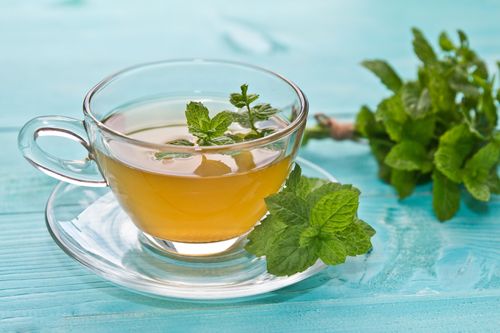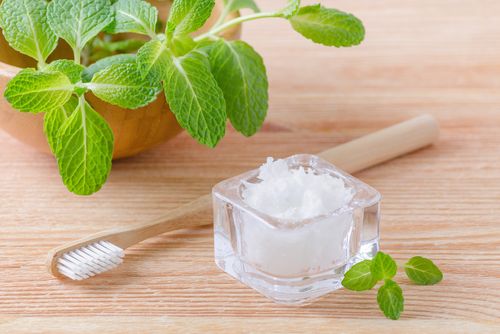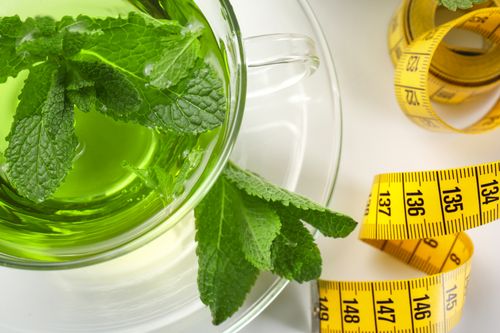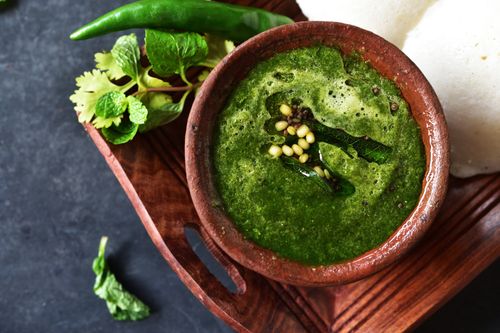Mint: 11 Marvelous Health Benefits, Nutritional Facts, and Healthy Recipes

Hiral Patel
September 22, 2020

Hiral Patel
September 22, 2020
Mint, commonly known as pudina, is a herb found in every Indian kitchen. It thrives in the chilly winter climate of Northern India, with many homemakers growing it in potted plants. A liberal addition of mint leaves as garnish not only improves the appearance of a dish but also lends a unique freshness to it. You can use it both in savory as well as sweet dishes. Refreshing drinks often contain this herb as it comes with a host of benefits that include freshness of breath and cooling of the body. Furthermore, this is certainly not the extent of its usefulness either. You are sure to be amazed by the plethora of nutritional benefits associated with this emerald green herb so close to the Indian heart.
Mint/Pudina is a member of the Lamiaceae or the Labiatae family. Aromatic in nature, mint possesses a brilliant green color that is soothing to the eye as well. Mint is available in several varieties with peppermint and spearmint being the most popular out of 15 to 20 types of mint grown regularly. It has been cultivated commercially in India for ages. However, any country with sunny conditions can grow it in huge numbers with parts of the USA, Middle East, and South Asia being incredibly famous for its high yield and superior quality. A variant known as Japanese mint is now being cultivated in India too. Mint is found to be chock-a-block with multiple nutrients. The nutritional content of mint happens to be as follows.
Mint is also known to contain potassium, iron, phosphorus, Vitamins A & C, along with calcium and magnesium in lesser amounts. Thankfully, you do not require to consume enormous amounts of mint for your health, as tiny quantities will do wonders too. Let’s check out the associated health benefits of mint to enjoy living a healthy and fruitful life.

Mint has a calming effect on an irritated stomach. It has been used since time immemorial to soothe an upset stomach. You can try it to find relief from several G.I. tract issues, including indigestion, irritable bowel syndrome, abdominal pain, and flatulence. Mint eliminates all harmful microbes from the gut and helps to relax the muscles of your abdomen, thereby enabling you to find relief. Therefore, many Indians prefer to chew mint tablets after a particularly heavy meal.
Mint leaf contains rosmarinic acid, an antioxidant with anti-allergic properties. Regular consumption of mint, especially in the winter, can help asthmatic patients find relief. It’s anti-inflammatory nature will not only enable you to get rid of congestion with the airway but also facilitate easy oxygen passage and relief.

Menthol, the main component of mint, can help you to clear congestion from the nose. It also helps to break the phlegm and liquefy the mucus causing it to be expelled quickly. You will thus find relief from a stuffy nose and nagging headaches when down with a common cold. This is the reason why so many of the anti congestion ointments and rubs contain mint.

Studies reveal that the aromatic oils present in mint leaves can enhance the functioning of your brain, alertness and increase retention power. Mint is also believed to boost cognitive ability.

Almost every individual reaches for mint after a large meal to refresh the breath. Mint is known to hide the nasty odour related to the consumption of pungent foods. However, this herb merely masks the smell but does nothing to kill the bacteria associated with bad breath.
Smelling fresh mint leaves in the morning or chewing them will allow nausea to pass. This is particularly helpful for expectant mothers who may be plagued with morning sickness during the first trimester of pregnancy.
Ayurveda, the ancient medicinal practice of India, recommends using mint to pep up the diet. It has a cooling effect on the body. Besides, it comes with both antiseptic and anti-inflammatory properties that aid the body to digest food without causing any discomfort.

Adding a drop of mint oil and rubbing it on the forehead can help to calm your mind. However, you can also sip on mint tea periodically to get relief from stress and anxiety. You will also be able to sleep well when your mind is calm and composed.

The combination of menthol and salicylic acid present in mint can have a magical effect on your skin. Be sure to include mint in your skincare regimen for brightening up your complexion and getting rid of acne. Vitamin A present in the herb will regulate the oil secretions thus helping you to have beautiful, blemish-free skin.

Chewing of mint is endorsed by the “American Dental Association” too. This action releases anti-inflammatory and anti-bacterial components of mint that not only cleanses your oral cavity thoroughly but also helps keep your teeth and gums healthy as well. Moreover, the chewing action increases secretion of saliva, enabling your body to remove excess acid within your mouth.

The digestive benefits of mint will help you keep your weight down. The mint in your food will stimulate the gastric enzymes causing the food to be absorbed speedily. This will result in increasing the rate of metabolism. You will, therefore, lose additional weight and remain in shape without compromising your health.

Enjoy it with hot steaming rice or Indian flatbreads (chapatis or parathas).

Serve in small glass bowls by garnishing it with a fresh sprig of mint leaves. It is an ideal accompaniment to Idli, dosa, Dhokla, Sandwiches, wraps, etc.
Mint is a delightful herb with a fresh taste and amazing health benefits. A powerhouse of nutrients, it can be added safely to a number of dishes. From tasty snacks to appetizers, main dishes and desserts, mint has proved to be a nutritive addition everywhere. It benefits every part of the body by improving your complexion to cleansing your mouth and freshening your breath and helping you shed those extra kilos. While you will be able to reap its benefits by consuming capsules and tablets containing mint, the Indian way of enlivening food with mint remains the most popular way of using it.
A. There are various ways to include mint in routine for different benefits.
1. Eating 10-15 fresh leaves, add them to detox water or teas or to curries or other food preparations
2. By adding few drops of mint oil to steaming process for cold or add to room fresheners
3. Consuming mint juice or paste, even mint oil can be included in skin and hair health routine
A. Too much consumption may lead to some effects including heartburn, dry mouth, nausea, and vomiting. People with gastroesophageal reflux disease (GERD) should not use mint in an attempt to soothe digestive issues as mint commonly acts as a trigger for GERD symptoms.
A. Consuming 12-15 fresh mint leaves daily is the best way. You can even consume them by adding them to detox water, herbal teas, yogurt, smoothies, salads, soups, dips and sauces, etc.
A. Yes. The easiest and most common way to grow mint is from a well-rooted starter plant in a nursery container.
A. Yes. Mint is a good source of Vitamin A, C and rich in antioxidants.

